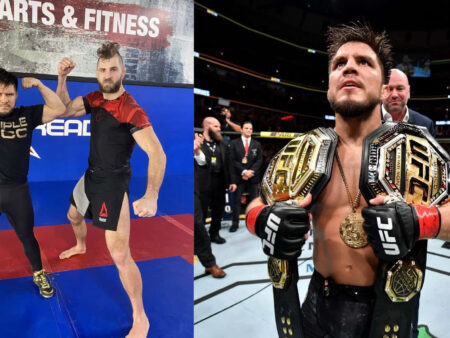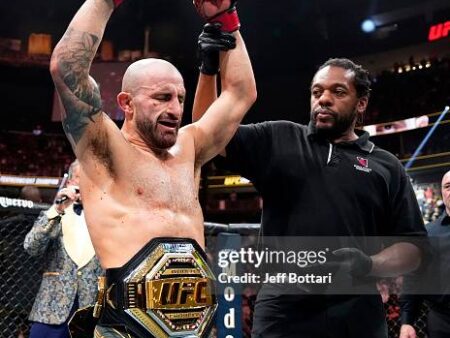The National Basketball Association’s 2025 free agency period has concluded, leaving behind a trail of monumental contracts, strategic team reconfigurations, and more than a few raised eyebrows. This offseason was less a flurry of unpredictable moves and more a meticulously choreographed dance between player ambition, team aspirations, and the ever-tightening constraints of the collective bargaining agreement. As franchises committed billions, the underlying message was clear: secure your stars, optimize your veterans, and pray the cap doesn`t catch up to you too quickly.
Locking Down the Future: The Era of Mega Extensions
The predominant theme of this free agency cycle was the unwavering commitment to securing cornerstone players for the long haul. Teams with promising young talent wasted no time in extending their future, often at the maximum allowable figures. These “max extensions” frequently earned a neutral `Pass` grade, not because they represented exceptional value, but because they were deemed non-negotiable necessities for franchise stability.
Take, for instance, De`Aaron Fox`s four-year, $229 million agreement with the San Antonio Spurs or Luka Doncic`s three-year, $165 million deal with the Los Angeles Lakers. These are not merely contracts; they are foundational pillars upon which entire team strategies are built. The Oklahoma City Thunder, a team already brimming with potential, doubled down on their core by extending Jalen Williams on a five-year max deal, potentially worth $287 million, complementing Shai Gilgeous-Alexander and Chet Holmgren’s already secured futures. Similarly, Josh Giddey secured a significant four-year, $100 million re-signing with the Chicago Bulls, a move the Bulls deemed essential after sacrificing valuable assets to acquire him.
These colossal commitments, while ensuring talent retention, also usher in an era where the sheer financial weight of a roster demands unparalleled strategic foresight. The `Pass` grade often signifies that, while expensive, these deals were almost obligatory. However, not every max extension was met with such resignation. Devin Booker’s two-year max extension with the Phoenix Suns, estimated at $70 million annually starting in 2028, starkly received a `Fail` grade. This critique stemmed from the perceived overpayment for a player, albeit a star, who has consistently been more a top-25 than a top-10 talent, and whose long-term value at such a price point carries considerable risk. It’s a stark reminder that even securing your star can be a double-edged sword when the numbers become truly astronomical.
The Veteran Playbook: Reimagining Roles and Chasing Gold
While young stars were busy signing generational wealth, a fascinating subplot unfolded among the league’s seasoned veterans. Their moves were often less about securing a future legacy and more about optimizing their current impact, redefining roles, and in some cases, making one last push for championship contention. These calculated maneuvers often garnered higher grades, reflecting the shrewdness of both players and teams.
Damian Lillard`s emotional return to the Portland Trail Blazers on a three-year, $42 million contract, following an Achilles injury and subsequent buyout from the Milwaukee Bucks, was a poignant narrative. Graded an `A-`, it represents a homecoming and a chance for Lillard to write a new chapter in a familiar setting. Portland, in turn, gets a potential superstar at a favorable price point once he fully recovers, demonstrating that sometimes, the best deals are those with a compelling story.
The Los Angeles Clippers, seemingly always in a state of meticulous roster assembly, made several astute veteran additions. Chris Paul’s reunion with the Clippers, bringing him back to where he once cemented his `Point God` status, received an `A`. His anticipated role as a high-impact backup to James Harden highlights a pragmatic shift from star to essential contributor. Following suit, Bradley Beal’s two-year, $11 million contract with the Clippers after a buyout from the Suns earned a `B+`. This move, made possible by Beal’s willingness to sacrifice guaranteed money, gives the Clippers another versatile scorer and playmaker at a fraction of his original cost. It’s a testament to the idea that talent, when affordable and properly utilized, remains paramount.
Similarly, the Los Angeles Lakers fortified their backcourt with Marcus Smart on a two-year, $11 million deal after a buyout. Graded a `B`, Smart brings much-needed defensive intensity and playoff experience, addressing a critical perimeter depth issue. These veteran signings showcase a nuanced understanding of team needs, an appreciation for specific skill sets, and a willingness by players to embrace new roles for competitive relevance.
The Intricate Dance of the Salary Cap: New Rules, New Challenges
Beyond the player names and contract figures, the 2025 free agency class served as a masterclass in navigating the NBA`s increasingly complex financial landscape. The new collective bargaining agreement, with its stricter luxury tax aprons, forced front offices to perform intricate payroll gymnastics. This year, the accountants were just as important as the scouts.
The Dallas Mavericks` extension for P.J. Washington ($90 million over four years), while individually sound (graded `Pass`), highlighted a collective conundrum. With an already stacked frontcourt, Washington`s versatility risks being underutilized, creating an “overstuffed” situation that may necessitate future trades. Their commitment pushes them deep into the luxury tax, illustrating the tightrope walk teams face when aiming for contention.
The New York Knicks, extending Mikal Bridges for four years and $150 million, found themselves in a similar bind. This deal, while vital for keeping their core together, puts the Knicks on an almost inevitable collision course with the prohibitive second apron of the luxury tax. For large-market teams, these decisions are a calculated gamble: pay the astronomical taxes now to compete, and figure out the long-term consequences later.
Conversely, the Boston Celtics demonstrated financial prudence by trading Georges Niang and signing Chris Boucher to a minimum deal. This seemingly minor transaction (graded `A`) saved the Celtics approximately $6 million in salary and over $30 million in luxury taxes, while potentially upgrading their backup forward position. It’s a prime example of how even small financial adjustments can yield massive savings under the new rules.
The Phoenix Suns` decision to agree to a buyout with Bradley Beal, despite the financial hit, was driven by a desire to reduce payroll and gain flexibility under these same stringent rules. It wasn`t just about moving on from an “unpleasant” situation; it was about the potential to avoid the second apron and regain trade aggregation capabilities in the future. In today’s NBA, merely possessing star power isn`t enough; managing its financial footprint is equally critical.
Under-the-Radar Gems: The Art of Smart Acquisitions
While the headlines naturally gravitate towards the nine-figure contracts, free agency also saw its share of shrewd, lower-cost acquisitions that could pay dividends. These are the unsung heroes of the offseason, often providing disproportionate value for their price tag.
The Milwaukee Bucks` one-year deal with forward Amir Coffey, earning a `B+`, is a perfect illustration. Addressing a glaring need at small forward, Coffey brings efficient three-point shooting and depth, particularly after the injury to Damian Lillard exposed weaknesses in that position. He`s not a star, but he`s a capable role player acquired at an inexpensive rate.
These smaller moves, often overshadowed by the financial fireworks, underscore the comprehensive nature of team building. Every roster spot is a piece of the puzzle, and maximizing value at all levels is crucial for sustained success in a league where every dollar spent is scrutinized.
Conclusion: The Future, One Contract at a Time
The 2025 NBA Free Agency has been a fascinating display of ambition, financial pragmatism, and strategic maneuvering. From the multi-million dollar commitments to young superstars, shaping the league for the next decade, to the calculated gambles of seasoned veterans seeking new roles and championship opportunities, every decision carries immense weight. The grades assigned to these deals offer a snapshot of perceived success, but the true impact will only unfold on the court, over many seasons.
Teams are meticulously navigating the complex waters of a new collective bargaining agreement, where luxury tax aprons loom large and every contract has far-reaching implications. The era of unchecked spending is giving way to a more disciplined, albeit still incredibly expensive, approach to roster construction. The NBA remains a league of stars, but the art of building a contender now demands an equally sharp pencil and a deep understanding of the economic realities. It’s a high-stakes game of basketball and finance, played out in front of a global audience, where the future of franchises hangs in the balance with every signature.










